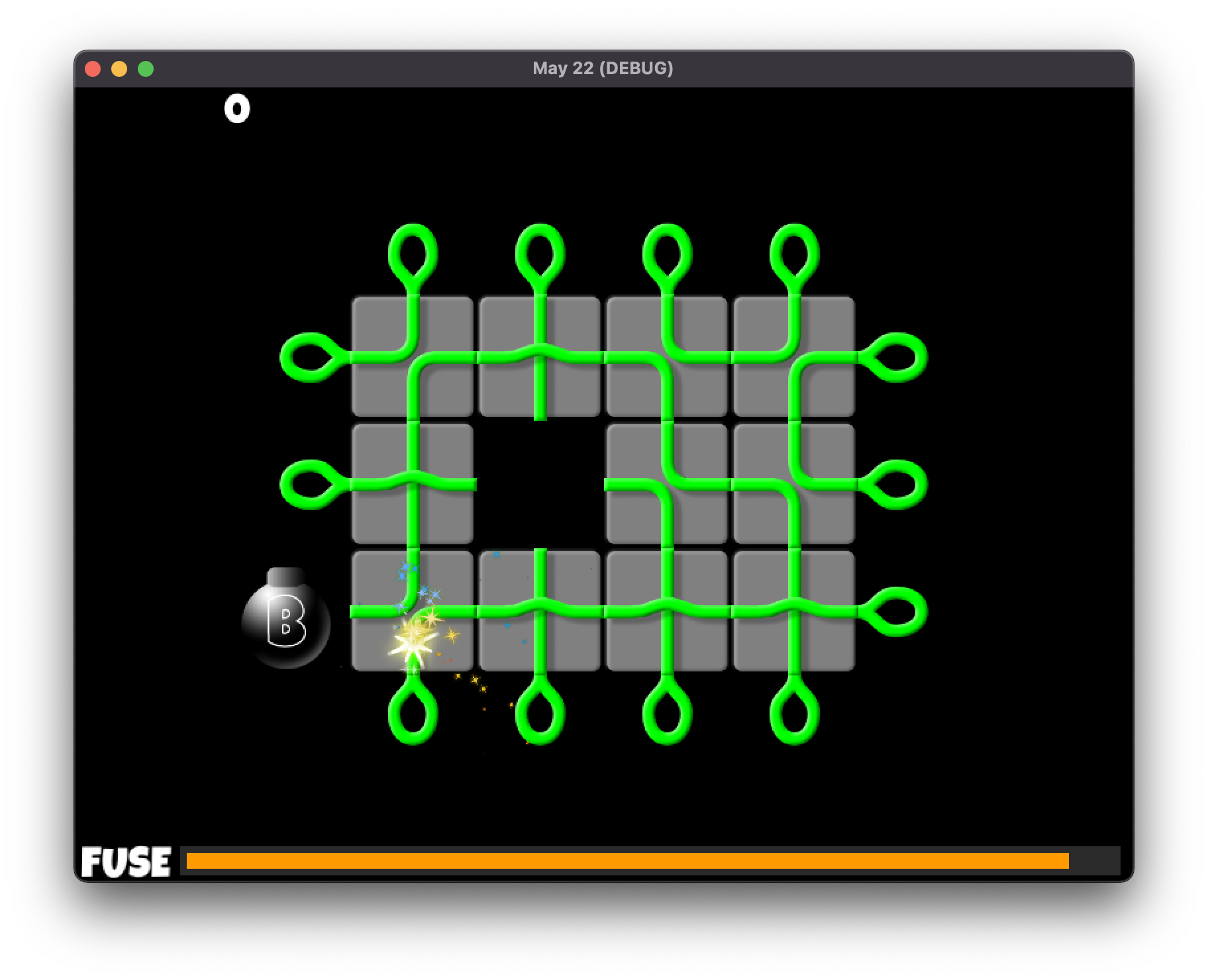Day7: a lot of work behind the scenes cleaning up some of the rushed code that is inevitable when building something this fast and loose.
- Create custom Godot Resource classes to hold information about individual tiles. This allows me to create tile types as on-disk resources with exposed variables that can be edited in the Godot UI for convenience. Then a startup routine at initialisation time scans a specific resources folder and loads all the tile types from disk and registeres them.
- Similarly, a new Resource class to store level details, as an array of array of tile type enums, a starting cell and starting direction.
These two underlying changes will make it much easier to do the inevitable but mind-numbing task of transcribing all the levels from the original game into this new system.
Managed to spend some time on the fun parts, added particle effects for both the bomb explosion and the spark itself, each multi-layered to get better effects. The sparks are interesting, a combindation of three layers, two of which work in global space, so leave a trail of particles, and one that is in local space, the “twinkles” that move with the spark on the traces.
Started tying some of the parts together to make a more coherent “game”. Up to now it’s been a disparate set of parts, just thrown together to test out the basics. I’ve started adding signals to the custom global Event Bus implementation that is part of my template. These allow events to be triggered from anywhere in the game, and moreover, listened for anywhere, without the listener requiring implicit knowlege of the game object that emits the signals. For example, the spark has an energy level which runs down over time. Each time the spark energy is reduced, it fires a “spark_energy_changed” signal, along with the previous, current and maximum values through the event bus. The progress bar on the GUI has a script that listens for that signal on the event bus and updates the display. It doesn’t know anything about the spark itself, it doesn’t know where it is and doesn’t need a reference to it, it just knows that when the spark changes it’s energy, it will know about it.
Finally, enebled the scene switcher/fader that is also part of my template, and added a simple main menu and boot scene to load in the right order and use the scene switcher to manage fading between.
Lots of smaller changes, it’s almost playable now, just need to get it to switch to another level when a level is successfully completed.


